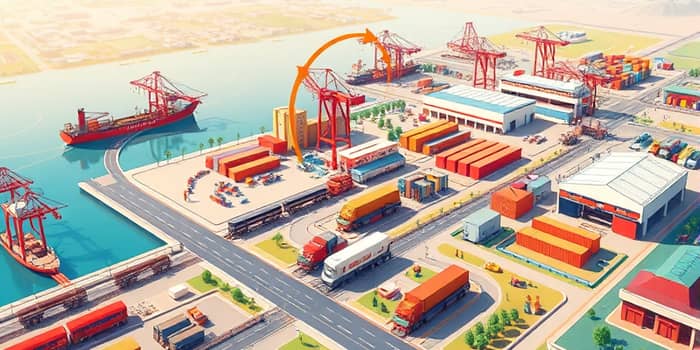
In the wake of unprecedented supply chain disruptions, rising geopolitical tensions, and shifting trade policies, companies worldwide are reconsidering long-standing offshoring models. The shift toward nearshoring and regional supply chains is not simply a trend—it represents a complete overhaul of logistics strategies to build resilience, reduce risk, and meet evolving environmental standards.
Several forces converge to push global businesses closer to their key markets. Ongoing tariff volatility and the tightening of the U.S. de minimis rule have exposed weaknesses in extended supply chains. At the same time, inflationary pressures and repeated shipping delays have highlighted the need for greater agility and responsiveness.
Trade agreements such as the USMCA, coupled with government incentives for regional production, have further encouraged manufacturing relocation. And, as sustainability regulations intensify, companies seek reduced transportation distances and carbon emissions, favoring suppliers within contiguous regions.
Mexico has surged as a top nearshoring destination for U.S.-based firms. Its strategic geographic proximity, combined with a skilled labor force and strengthened infrastructure investments, has led to a 5% increase in exports to the United States in 2023, totaling $451 billion.
The Mexican government’s focus on streamlined customs processes and infrastructure improvements—including expanded port facilities and upgraded rail corridors—has accelerated cross-border flows. Companies in automotive, electronics, and consumer goods sectors are establishing regional hubs suited for fast, responsive manufacturing cycles.
Nearshoring demands more than geographic relocation; it necessitates reimagined logistics networks. Firms are pivoting from large, centralized warehouses to regional hubs and cross-border warehousing networks, optimizing last-mile delivery and reducing lead times by days or even weeks.
Third-party logistics providers (3PLs) are adapting by expanding multimodal capabilities—blending road, rail, and short-sea shipping—and forging partnerships with local carriers to improve flexibility.
Digital transformation underpins the new logistics paradigm. Companies are deploying AI-driven route optimization, predictive analytics, and proactive tariff-management tools and analytics to navigate complex cross-border regulations.
In warehouses, automation and robotics support just-in-time inventory models and faster fulfillment. Integrated platforms offer real-time visibility, enabling rapid response to demand spikes and disruptions.
On the sustainability front, logistics players invest in cleaner fleets—electric trucks, low-emission vessels—and green infrastructure at distribution centers. These efforts align with corporate ESG goals and meet stringent environmental regulations.
While nearshoring promises speed and flexibility, it introduces new complexities. Cross-border congestion at ports and land borders can offset time savings. Regulatory compliance across multiple jurisdictions adds overhead, and in some cases, higher labor or overhead costs challenge traditional cost models.
Furthermore, regional diversification is often a compromise between offshoring and full reshoring. According to the 2025 Reshoring Index, complete onshore manufacturing returns remain limited, with most firms opting for a hybrid approach that balances cost, speed, and risk.
Looking ahead, logistics providers and shippers will deepen investments in strategic regional partnerships and investments, blending digital tools with local expertise. As e-commerce growth sustains, freight volumes will continue to rise, demanding ever more agile, resilient, and green supply chains.
The nearshoring wave marks a significant realignment in global trade. Organizations that master the interplay between technology, policy, and regional networks will emerge stronger—ready to navigate future disruptions and drive sustainable growth.
References













